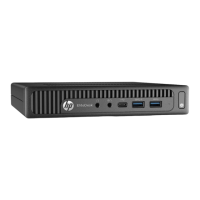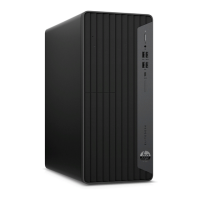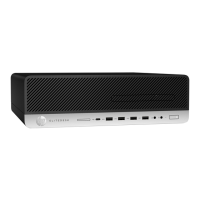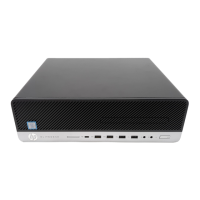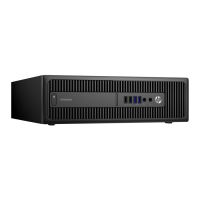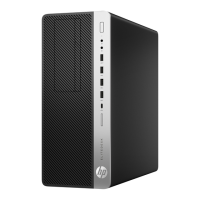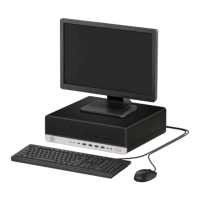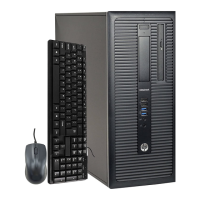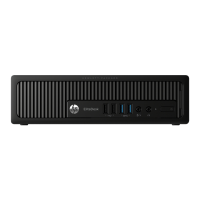Table 5-2 Computer Setup—Security (continued)
After you select a drive, the following options are available:
Set DriveLock Master Password. Sets the drive’s master password but does not enable DriveLock.
Enable DriveLock. Sets the drive’s user password and enables DriveLock.
●
Secure Erase
Lets you select a hard drive to completely erase.
Once a hard drive has been erased with a program that utilizes Secure Erase rmware commands, no
le recovery program, partition recovery program, or other data recovery method will be able to
extract data from the drive.
●
Allow OPAL Hard Drive SID Authentication
Smart Cover Cover Removal Sensor
Enabling this feature sends an alert if the computer cover is removed. Lets you select one of the following
options:
Notify User. The rst boot after the cover is opened will cause a POST error.
Administrator Password. After the cover is opened it will require entry of the admin password to boot the
system.
An SMBIOS record lists the most recent time the system was booted after the cover was opened.
If the cover is opened when the system is running, an WMI event is generated that management software
can detect.
System Management
Command
Allows authorized personnel to reset security settings during a service event. Default is enabled.
Restore Security
Settings to Default
This action resets security devices, clears BIOS passwords (not including DriveLock), and restores settings
in the Security menu to factory defaults.
Computer Setup—Advanced
NOTE: Support for specic Computer Setup options may vary depending on the hardware conguration.
Table 5-3 Computer Setup—Advanced (for advanced users)
Option Heading
Display Language Lets you select the language of the menus in F10 Setup and the keyboard layout.
Scheduled Power-On This feature wakes the system up from a powered o state at a specied date and time.
Boot Options Select the devices that the computer can boot from, as well as other options, including:
●
Startup Menu Delay(sec). Enabling this feature will add a user-specied delay to the POST process.
One purpose for the delay is to provide additional time to activate hotkeys such as Esc for the
Startup Menu or F10 for Computer Setup.
●
Fast Boot. Default is enabled.
●
CD-ROM Boot. Default is enabled.
●
USB Storage Boot. Default is enabled.
●
Network (PXE) Boot. Default is enabled.
●
After Power Loss. Default is Power O.
■
Power o—causes the computer to remain powered o when power is restored.
Computer Setup (F10) Utilities 63
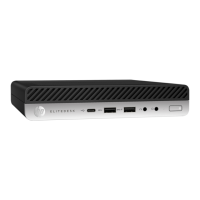
